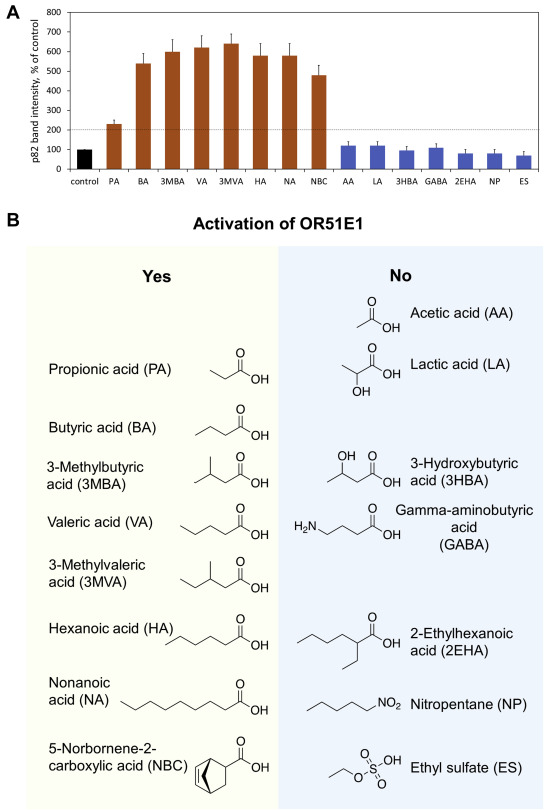Olfactory GPCRs Upregulated in Cancer
OR51E1 and OR51E2 linked to cell growthThe Sweet Smell of a Nobel
Thirty years ago, Linda Buck and Richard Axel described a large family of genes that encode what appeared to be G-protein coupled receptors, or GPCRs. These genes were expressed in the olfactory epithelium, and encoded an abundance of different gene products, in fact, more than three hundred of them. Buck and Axel proposed that these must be the olfactory receptors, I.e. ORs, that detect the many different scents and smells in our world.
Many ORs remain “orphans” today because they are difficult to express and study. However, it was discovered that many OR genes are expressed in other tissues and cell types that are not involved in the perception of perfume or fine wine. In fact, there is evidence for some of these receptors to play other physiological roles, for example, in sensing metabolites.
New Roles for OR51E1 and OR51E2
Alexey Pronin and Vlad Slepak at the University of Miami were particularly intrigued by the OR51E1 and OR51E2 receptors, which are known to be upregulated in metastatic prostate cancer. First, the Slepak lab had to establish a cellular system where OR51E1 and OR51E2 could be overexpressed in the functional form. Montana Molecular’s fluorescent caDDis assay for cAMP enabled them to confirm that certain short chain organic acids caused an increase in cAMP signaling in an OR51E1/2-dependent manner. Having confirmed that these receptors are functional, they turned to LNCaP, a lymph node carcinoma of the prostate, where they also showed that OR51E1 and OR51E2 traffic effectively to the cell membrane.

Compounds tested with OR51E1. A, a summary of the tested compounds activity at 1 mM in the PKA stimulation assay. The experiments were performed 3 to 5 times for each compound, and the bar graphs show mean ± SD for these experiments. B, structures of the compounds tested for their ability to stimulate intracellular cAMP via OR51E1 at 1 mM. A compound was considered active if it produced a response at least 100% above the basal value (control) in the PKA activity assay.
Further analysis revealed that overexpression of OR51E1 and OR51E2 receptors in LNCaP caused the cells to cease dividing, and surprisingly, cAMP signaling was not the link between receptor expression and cellular stasis. In addition to rising cAMP, these receptors appear to be coupling to other pathways, eventually leading to ERK phosphorylation and upregulation of certain cell death markers. Intriguingly, overexpression of these receptors did not slow cell division in HEK293 cells, so it appears that this OR signaling pathway is specific in these prostatic cancer cells. This work has recently been published in the Journal of Biological Chemistry and also presented at the EB 2021 conference.
Why would olfactory receptors be upregulated in prostatic cancer cells?
Ultimately, Pronin and Slepak leave us with new puzzles: the signaling pathway by which these receptors cause cells to stop dividing is unclear, and why these cancer cells would express these receptors remains an enigma. However, since the GPCR family is the most common drug target, their observations also bring about hope: it is possible that by activating these ORs with new therapeutic drugs we can cause cancer cells to quit dividing and possibly die. According to Dr. Slepak, “New biosensors for GPCR signaling will help us understand how these ORs may couple to cell growth or cytotoxicity. This is our next step.” We couldn’t agree more, in fact, this smells like a new opportunity.
New biosensors for GPCR signaling will help us understand how these ORs may couple to cell growth or cytotoxicity. This is our next step.
Shop cADDis kits
Contact Us
Slepak Lab
Vladlen Slepak, Alexey Pronin “Ectopically expressed olfactory receptors OR51E1 and OR51E2 suppress proliferation and promote cell death in a prostate cancer cell line” JBC, January 2021. https://doi.org/10.1039/D0NA01007C.




